How close should a humidifier be to a baby? If you are a parent struggling to find the answer to this question, you are on the right article. A humidifier that is too close could pose health risks, while one that is too far may not properly humidify the air.
So to clear your doubts, read on as I’ll provide the optimum range for placing the humidifier, 7 associated dangers with the placement of the unit, and important safety measures. Let’s get started!
Related Topic: Best RV Dehumidifier: Top 7 Units To Buy For Camping in 2025
How Close Should a Humidifier Be To a Baby: Revealed!
You should place a humidifier 3-4 feet away from the baby’s crib or bed. Keeping the humidifier in this position will prevent excessive moisture accumulation on your baby’s bedding or toys.

However, the distance of the humidifier from the crib is not all the parameters you need to consider when choosing the location of the device in the nursery.
Keep reading and you will learn at what height the device should be installed, why it should not be placed on the floor, and what function to use to protect your children from dangerous accidents.
Where to Place Humidifier For Baby: 3 Best Placement Tips
When setting up a humidifier in a baby’s nursery, finding the ideal spot that maximizes humidity while minimizing potential risks is important. The following 3 tips can help you:
1. Set the Optimum Distance
As described earlier, place the humidifier for your baby at least 3-4 feet away from their resting area. Maintaining this distance can give the following benefits:
- Allows humidity to distribute evenly around the baby’s bed;
- Avoids direct mist that could irritate the baby’s respiratory system;
- Discourages mold growth, which could impact the baby’s health;
- Far enough to keep the noisy operations from disrupting the baby’s sleep.

2. Consider the Room’s Layout
While putting the humidifier in the room, you need to consider its dimensions and find a place that could equally distribute the moisture. Here are some tips that can help you.
- Keep the device in the center: Place the humidifier in the middle of the baby room to maximize the airflow. If possible, better place it on the table or some elevation off the floor at a height of 2 feet.
- If the center location is not feasible: In this case, put the device away from the room’s boundaries to maximize coverage.
- Flat surface: Try choosing a level, stable spot for the humidifier to sit on so it operates properly and doesn’t spill. Don’t place it on absorbent surfaces that may block the mist.
- Keep away from the sun: Don’t place the humidifier under direct sunlight. Exposure to the sun can create excess heat that could warp parts and cause irregular mist production.
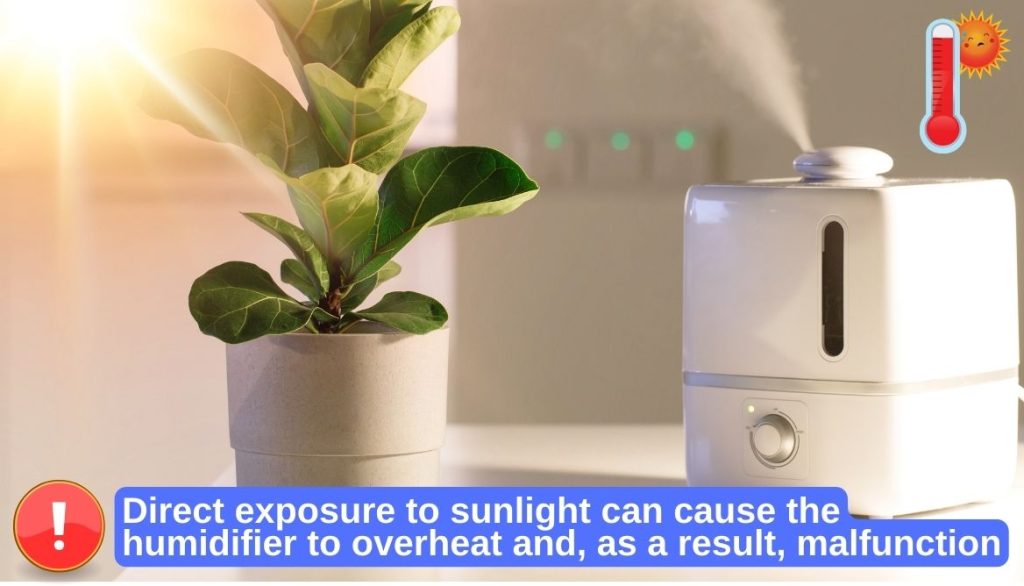
3. Ensure Child Security Near the Humidifier: 6 Important Humidifier Safety Tips
Listed below are the important guidelines to ensure child safety near the humidifier:
- Supervision: Do not leave the humidifier running unattended with children in the room. Adult supervision is required.
- Utilize filtered water: Use distilled water in the humidifier to prevent mineral deposits from dispersing into the air.
- Location: Place humidifier up high, out of reach of children. Avoid floor placement where it can easily tip.
- Cords: Keep electrical cords tucked away securely. Do not let cords dangle where children can reach and pull.
- Put away from hot things: Avoid placing the humidifier next to warm objects like radiators, which could lead to overheating and burns. Position away from heat for baby’s safety.
- Hot surfaces: Humidifiers can get hot. Place out of reach to avoid burns. Let cool completely before touching. You can also get a cold mist humidifier to avoid burning issues.
Read Also: Best Place to Put an Air Purifier: 7 Important Points
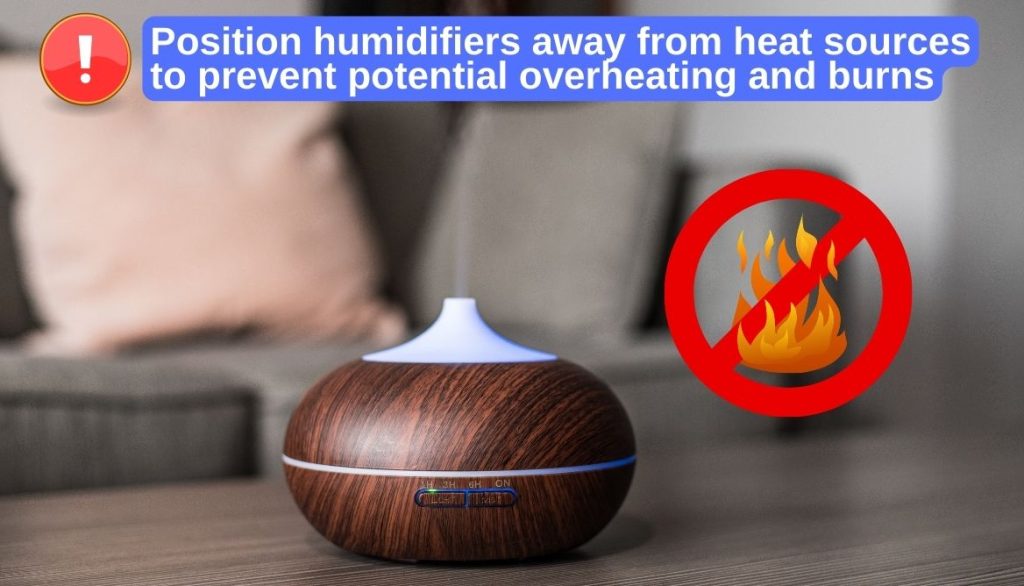
What are the Advantages of Using a Humidifier in Your Baby’s Room?
A humidifier offers numerous benefits. Let’s have a look at them in detail:
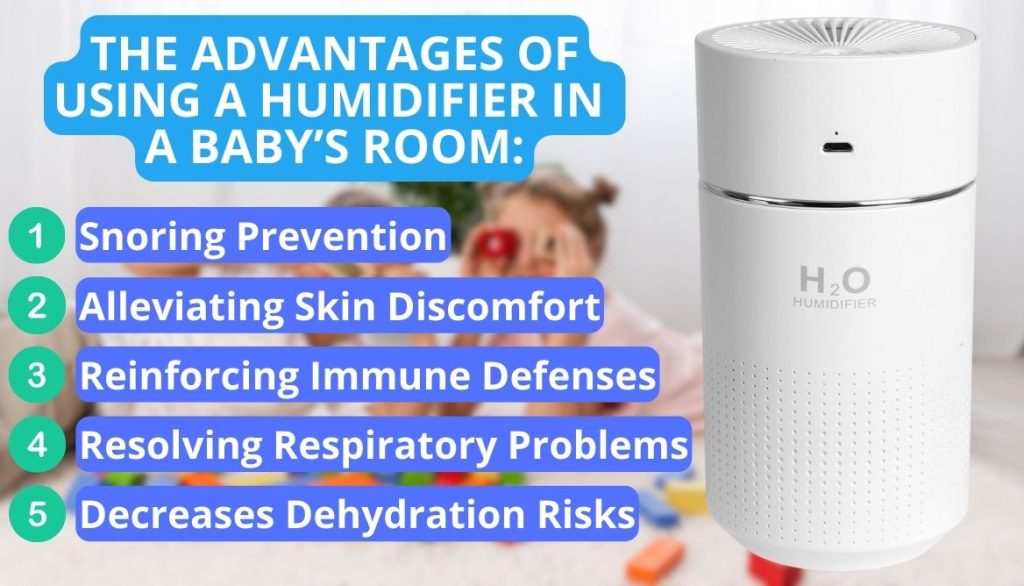
- Snoring Prevention: It’s common for infants to snore as they continue to discharge amniotic fluid from their nasal passages. A humidifier keeps the nasal passages moist moisture which will facilitate smooth breathing and lessen snoring.
- Alleviating Skin Discomfort: A humidifier can prevent dry skin issues in babies by adding skin moisture. As a result, it can lower the discomfort due to several skin diseases such as eczema, dermatitis, and psoriasis.
- Reinforcing Immune Defenses: Humidity enhances the moisture in the air spaces and sinuses of a baby. This traps harmful bacteria and viruses and prevents the spread of common seasonal illnesses, enhancing your baby’s immune system.
- Resolving Respiratory Problems: Constant moisture from a humidifier helps to clear mucus in the respiratory tracts. Thus, it alleviates the danger of respiratory diseases such as asthma or breathing difficulty symptoms.
- Decreases Dehydration Risks: The presence of enough mistiness in the environment lessens dehydration risks.
What are the Possible Dangers of Keeping a Humidifier Too Close to a Baby?
Although a humidifier is beneficial for a baby, its wrong placement can have various harmful effects on health. Other than the placement, incorrect setting and failure to maintain can also put the life of a baby at risk.
Let’s have a look at the possible dangers that a baby can face due to a humidifier:
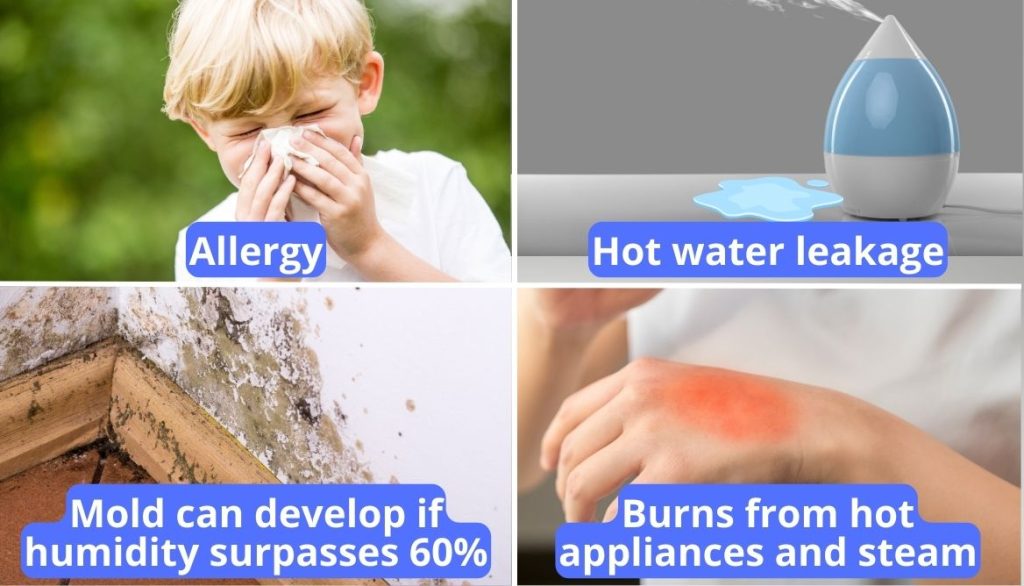
1. Allergy
Many parents are unaware that the humidifier is a source of their baby’s recurrent allergies. This is how it contributes:
- A higher-than-normal humidity encourages dust mites that can increase the risk of allergies.
- A dirty humidifier releases pollutants that can also lead to allergies.
- Accumulation of humidity in the room due to improper ventilation can lead to symptoms like coughing or dry skin rashes.
To reduce these problems, I would recommend you check out the humidity levels of the room with a thermometer such as Mengshen Humidity Meter. Moreover, clean the humidifier regularly to enhance the air quality. Don’t forget that the baby’s room should be properly ventilated.
2. Bacterial and Fungi Problems
If there are high levels of humidity in the moist air, it can encourage bacterial growth. In fact, if the levels of humidity are higher than 60% in the air, there is a great chance of mold incubation in the room.
To prevent the growth of the germs, follow these tips:
- Keep a check on the levels of humidity.
- Clean your device regularly with anti-bacterial solutions like Protec Humidifier Cleaner.
- Buy anti-bacterial humidifiers that have anti-bacterial filters to trap harmful germs in the air.
Consult this for proper cleaning of your humidifier:
Read Also: Can You Use a Humidifier Without a Filter? 3 Important Points
3. Accidental Water Leakage
If you have a humidifier, ensure that it doesn’t spill any water. These spillages can lead to various risks, such as electrocution, and promote microbial growth. The leading causes of spills include:
- Obstructed drainage pipes;
- Clogged evaporator pads;
- Overfilled humidifier.
To prevent the risks of water spills, identify the source of the leak and treat it timely. If you are still looking for the leakage, get help from a professional.
4. Burns
While it’s working, some humidifiers can generate a lot of heat, making the device extremely hot. The steam that is released also poses a risk.
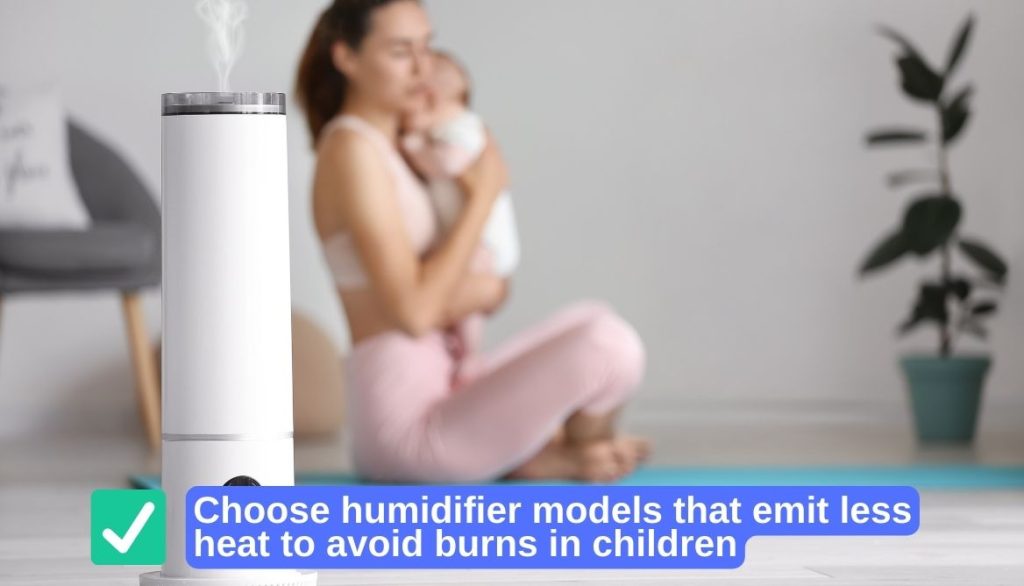
Therefore, you should choose the models that produce less heat. An ultrasonic humidifier such as Pure Enrichment MistAire Ultrasonic humidifier is a great example of such a safer substitute.
5. Electrocution
If you have a humidifier that has naked wires or leaks fluid, it can induce electrocution in both children and adults. Follow the given safety measures to reduce electrocution risks:
- Replace any exposed wires or loose connections;
- Ensure that you don’t overfill the humidifier;
- Use a cord kit.
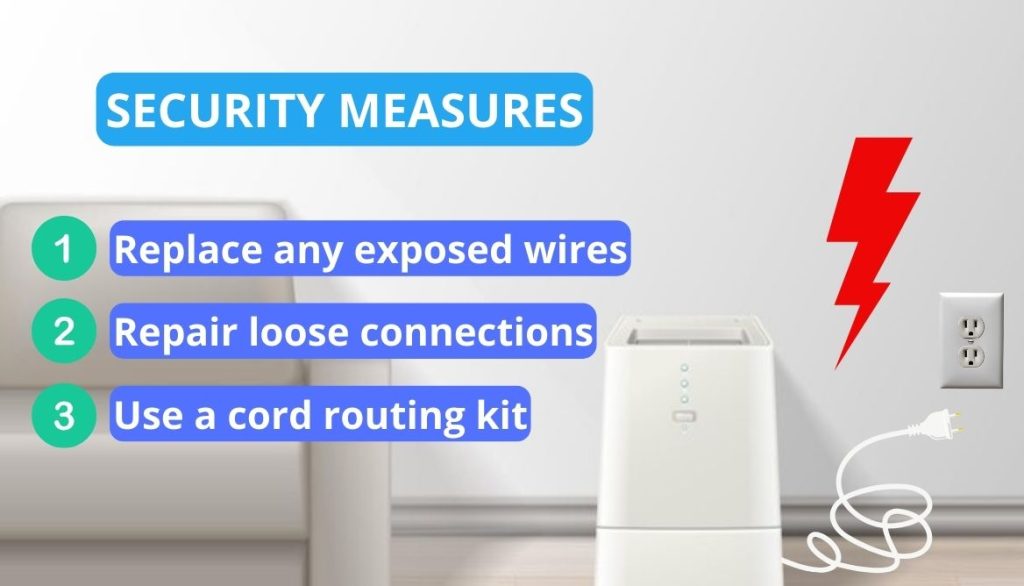
6. Tripping on Wires
Most humidifiers have long power supply lines. The purpose of these long cords is to permit variable positioning for the best humidifier performance. However, they also increase the chance of tripping.
To minimize the possible risk these connections pose, I would advise you to install the humidifiers while keeping the wires out of the way. Moreover, install baby-proofing such as the Cord Cover Raceway Kit on the wires and sockets as much as possible.
Use of Additives in Child’s Humidifier
Many people tend to use additives such as methanol and essential oils in a humidifier to enhance the fragrance of a room. However, the use of such additives should be limited. This is because they can release potentially hazardous particles irritating the baby’s respiratory system.
Humidifier Types: Which One Is Right for Your Baby’s Nursery?
There are various types of humidifiers in the market. But which one is the most suitable for you? The following are options that you can explore while buying a device:

- Ultrasonic Humidifiers: They produce a fine mist using high-frequency vibrations. Moreover, they also generate less heat.
- Evaporative Humidifiers: These humidifiers use a fan to move moist air through a filter. Such devices automatically adjust the humidity levels.
- Cool Mist Humidifiers: They spray a fine, cool mist of water vapors into the dry air. They are well known for relieving respiratory conditions and dry skin.
- Warm Mist Humidifiers: These devices heat water to produce steam, also known as steam vaporizers. However, they can increase the risks of burns.
Best Humidifiers for Baby
If you’re wondering which humidifier to purchase for your child’s room, here’s my pick of the best popular humidifiers on the market. Some of them I have already mentioned in my article:
Name of Product | Mist Type | Capacity | Floor Area | Operation | Price |
 Elechomes HTJ-2119 Ultrasonic | Cool Mist | 4.5 lit | 538 sq ft | Quiet | No products found. No products found. |
 Pure Enrichment Ultrasonic Humidifier | Cool mist | 1.5 lit | 250 sq ft | Quiet | No products found. No products found. |
 Levoit Smart Humidifier | Warm and Cool mist | 4.5 lit | 430 sq ft | Quiet | No products found. No products found. |
FAQs
Should the humidifier be on high or low for the baby?
The humidifier should be used on low to keep the baby’s room at a comfortable humidity level without adding excess moisture.
Can you use a humidifier around a baby?
Yes, you can use a humidifier around a newborn. It usually is safe and can also help clear up nasal congestion.
Where should I place the humidifier in my baby’s room?
You can place the humidifier in a secure area at least 3 feet away from the cot to avoid moisture buildup.
Is it OK to leave a humidifier on all night for the baby?
Yes, it is okay to leave a humidifier on all night for the baby, especially if a doctor recommends it. However, it is essential to monitor the humidity levels and cleanliness.
Read Also: How Long to Run an Air Purifier for the Best Result?
Conclusion
Let’s revise! How close should a humidifier be to a baby? It is recommended that your humidifier should be between 3-4 feet from the baby. If you put it too far, the baby won’t get enough moisturization.
On the other, keeping it too close can increase the wetness and lead to bacterial growth. Additionally, try to place it on an elevated area such as a table.
Also, it is essential to look for loose connections, wirings, or leaks to prevent accidents. Finally, don’t forget to take care of the device and clean it regularly to minimize the release of germs to ensure the baby’s safety.
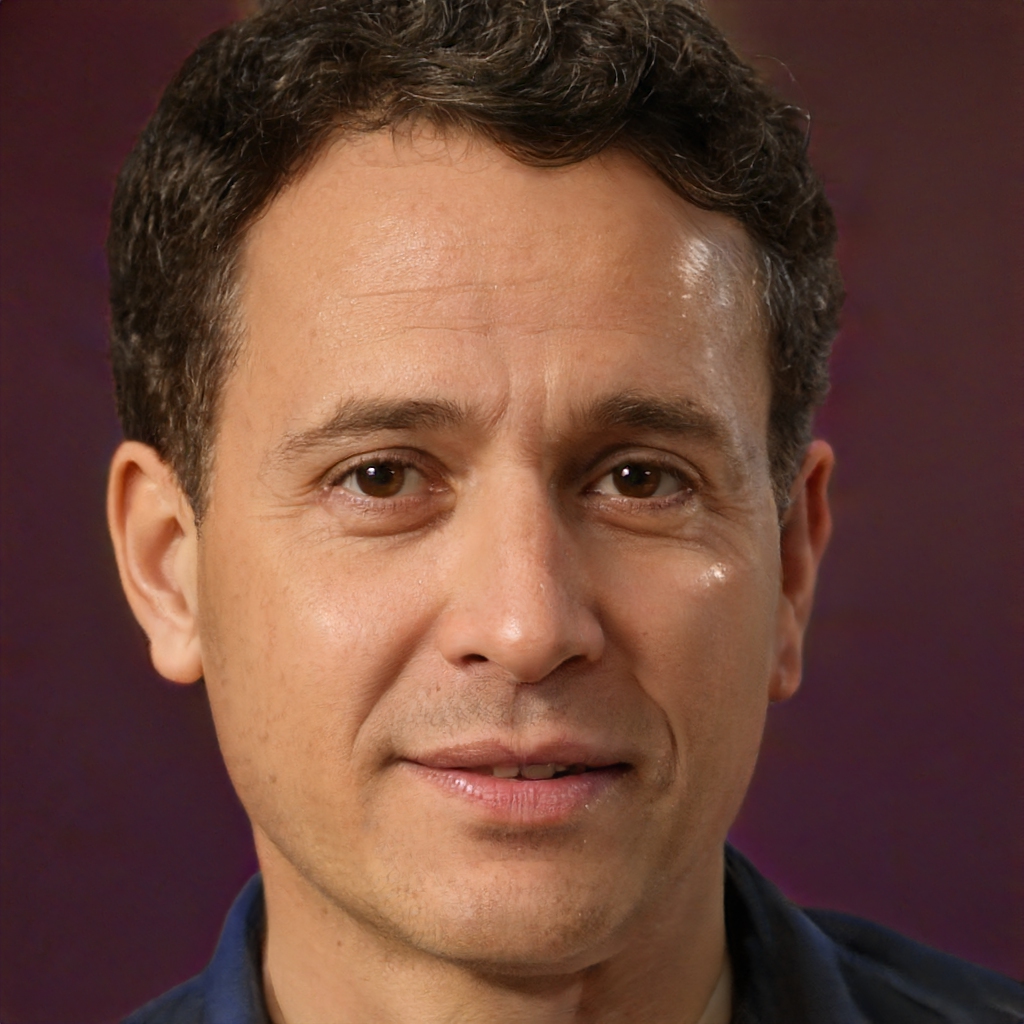
Danny is a passionate writer who loves to share his knowledge about air purifiers. He’s been writing for 10 years, and he’ll share all that experience with Very Well Home viewers to help you make the best decision when it’s time to buy an appliance!







